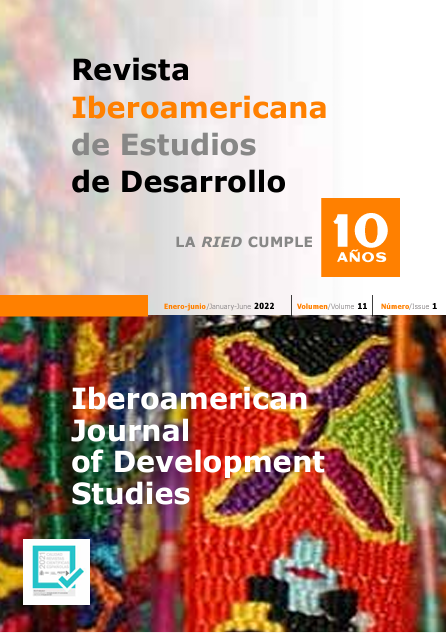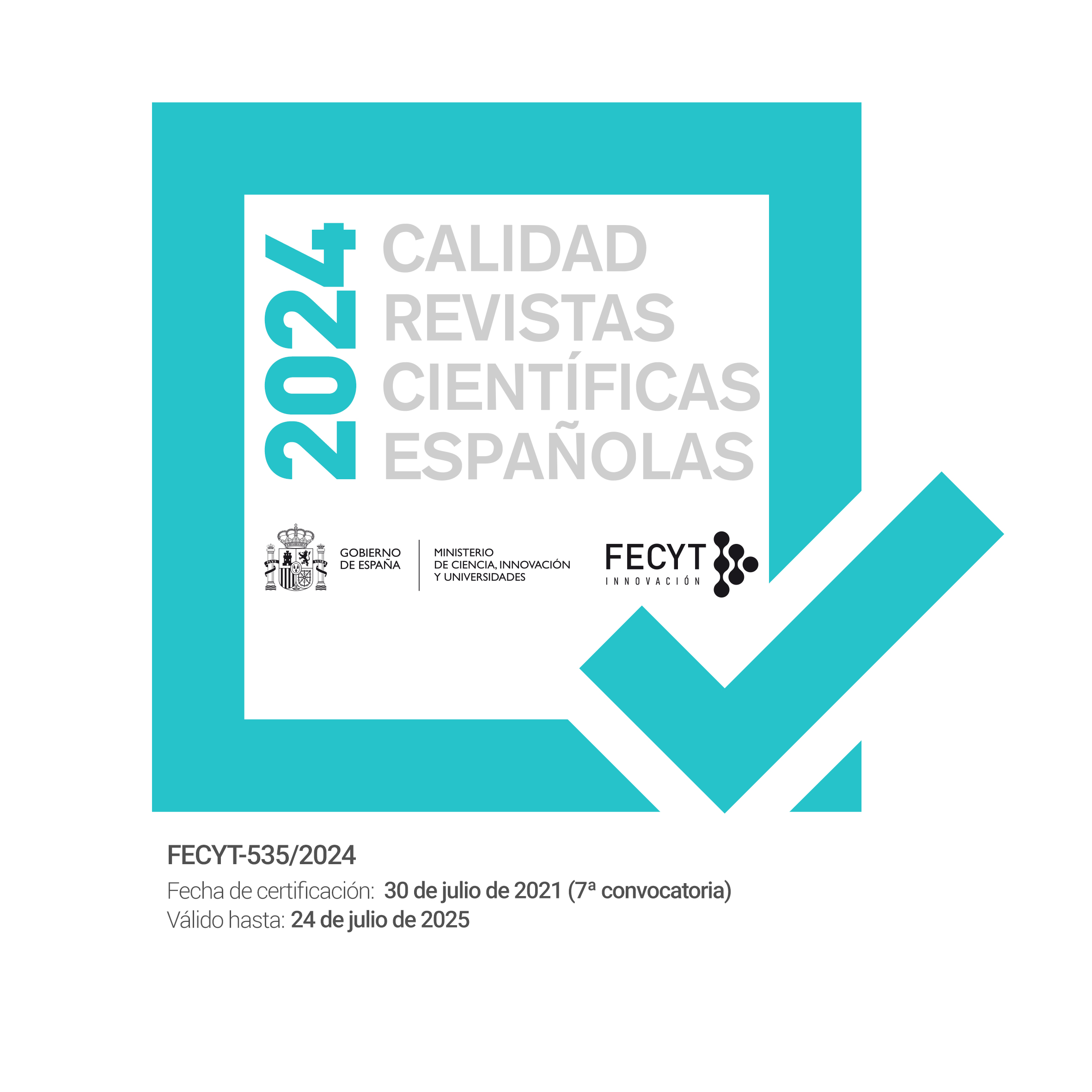Analytical framework for integrating climate change mitigation and adaptation in local urban planning policy
DOI:
https://doi.org/10.26754/ojs_ried/ijds.665Keywords:
climate change mitigation, climate change adaptation, urban planning, policy framework, integrationAbstract
Climate change is a multidimensional observable fact and is regarded as one of the greatest challenge human societies is facing in the 21st century. Debates on climate change advocate that urban areas not only contribute to climate change by emitting huge amounts of carbon-dioxide gas into the atmosphere, but also play a vital role in addressing climate change. This research investigates whether local urban planning policies in master plans target climate change mitigation and adaptation. Accordingly, this research undertook a qualitative content analysis of the policy framework of master plans that are involved in the sample and developed climate change mitigation indexes for all the sampled master plans by assessing urban policies against climate change mitigation evaluation protocols. This research significantly contributes to the field of urban planning and public policy by developing empirical evidence that analyzes the relationship between urban planning policies and climate change mitigation and adaptation. This research supports the use of master plans as an effective tool in mitigating and adapting to climate change and has an implication for mainstreaming climate change mitigation and adaptation in urban planning.
Downloads
References
AHMED K, LONG W (2010). Adaptation as a Response to Climate Change: A Literature Review. MPRA Paper No. 45024, posted 14 Mar 2013 14:20 UTC. https://mpra.ub.uni-muenchen.de/45024/ , access January 2021.
BERKE PR, CONROY MM (2000). Are we planning for sustainable development? An evaluation of 30 comprehensive plans. Journal of the American Planning Association 66(1):21 33.
BERKE P, CRAWFORD C, DIXON J, ERICKSEN N (1999). Do co-operative environmental planning mandates produce good plans? Empirical results from the New Zealand experience. Environment and Planning B: Planning and Design 24: 451-68.
BERKE P, ROENIGK D, KAISER E, BURDY R (1996). Enhancing plan quality: Evaluating the role of state planning mandates for natural hazard mitigation. Journal of Environmental Planning and Management 39:79-96.
BERKE P, BACKHURST M, DAY M, ERICKSEN N, LAURIAN L, CRAWFORD J, DIXON J (2007). What makes plan implementation successful? An evaluation of local plans and implementation practices in New Zealand. Environment and Planning B-Planning & Design 33(4):581-600.
BOLUND P, HUNHAMMAR S (1999). Ecosystem services in urban areas. Ecological economics 29(2):293-301.
BURBY RJ, MAY PJ (1997). Making governments plan: State experiments in managing land use. Baltimore, MD. Johns Hopkins University Press.
CENSUS OF INDIA (2011). Registrar general and census commissioner. Ministry of Home Affairs, Government of India, New Delhi, India.
CERVERO R, KOCKELMAN K (1997). Travel demand and the 3ds: density, diversity, and design. Transportation Research Part D: Transport and Environment, vol. 2, Issue 3:199-219.
CHEN ZH, WANG JP (2006). From Overseas Chinese Gardens to City Parks ‒ Research of Modern Landscape Architecture in Southern Fujian [J]. Chinese Landscape Architecture 5, 013.
EDWARDS MM (2007). Evaluating Smart Growth: Implications for Small Communities. Journal of Planning Education and Research 27(1):49-64. https://doi.org/10.1177/0739456X07305792 , access January 2021.
ENGEL K (2005). Mitigating global climate change in the United States: A regional approach. NYU Environmental Law Journal 14:54-85.
EWING R, BARTHOLOMEW K, WINKELMAN S, WALTERS J, CHE D (2008). Growing cooler: Evidence on urban development and climate change. ULI, Washington DC.
GASPAR J, GLAESER EL (1998). Information Technology and the Future of Cities. Journal of Urban Economics, Elsevier, vol. 43(1):136-156, January.
HELLMUND P (1989). Quabbin to Wachusett wildlife corridor study. Harvard Graduate School of Design, Cambridge, MA.
HEPCAN S, HEPCAN ÇC, BOUWMA IM, JONGMAN RH, ÖZKAN MB (2009). Ecological networks as a new approach for nature conservation in Turkey: a case study of Izmir Province. Landscape and Urban Planning 90(3):143-154.
ICLEI (2005). International council for local environmental initiatives. http://www.iclei.org/ , access December 2020.
ICLEI (2010). Local Action for Biodiversity Guidebook: Biodiversity Management for Local Governments. Laros MT and Jones FE (eds.).
IIR (2010). India Infrastructure Report. 3i-Network. Oxford University Press, New Delhi.
IPCC (2007). Climate change 2007: Impacts, adaptation and vulnerability. Cambridge University Press, New York.
IPCC (2021). Climate Change 2021: The Physical Science Basis. Contribution of Working Group I to the Sixth Assessment Report of the Intergovernmental Panel on Climate Change. Cambridge University Press. In Press.
KONG F, YIN H, NAKAGOSHI N, ZONG Y (2010). Urban green space network development for biodiversity conservation: Identification based on graph theory and gravity modeling. Landscape and Urban Planning 95(1):16-27.
KUO FE, SULLIVAN WC (2001). Environment and crime in the inner city does vegetation reduce crime? Environment and Behavior 33(3):343-367.
LAURIAN L, DAY M, BACKHURST M, BERKE P, ERICKSEN N, CRAWFORD J, DIXON J, CHAPMAN S (2004). What drives plan implementation? Plans, planning agencies and developers. Journal of Environmental Planning and Management 47(4):555-577.
LAWRENCE HW (1993). The greening of the squares of London: transformation of urban landscapes and ideals. Annals of the Association of American Geographers 83.1:90-118.
LEE D, CHOE H (2011). Estimating the impacts of urban expansion on landscape ecology: Forestland perspective in the greater Seoul metropolitan area. J. Urban Plann. Dev., 10.1061/(ASCE)UP.1943-5444.0000090:425-437.
LINEHAN J, GROSS M, FINN J (1995). Greenway planning: developing a landscape ecological network approach. Landscape and urban planning 33(1):179-193.
MINISTRY OF ROAD TRANSPORT AND HIGHWAYS (1999). Handbook on transport statistics in India. Transport Research Office, Delhi, India.
MINISTRY OF ROAD TRANSPORT AND HIGHWAYS (2000). Handbook on transport statistics in India. Transport Research Office, Delhi, India.
MINISTRY OF ROAD TRANSPORT AND HIGHWAYS (2003). Handbook on transport statistics in India. Transport Research Office, Delhi, India.
MINISTRY OF ROAD TRANSPORT AND HIGHWAYS (2010). Handbook on transport statistics in India. Transport Research Office, Delhi, India.
MOHAN D (2004). Road traffic deaths and injuries in India: Time for action. Natl. Med. J. India 17(2):63-66.
MOHAN M (2010). Geospatial information for urban sprawl planning and policies implementation in developing Country’s NCR region: A study of NOIDA City, India. FIG Congress 2010: Facing the Challenges ‒ Building the Capacity, Sydney, Australia, pp. 1-15.
NORDH H, ALALOUCH C, HARTIG T (2011). Assessing restorative components of small urban parks using conjoint methodology. Urban forestry & urban greening 10(2):95-103.
NORDH H, HARTIG T, HAGERHALL CM, FRY G (2009). Components of small urban parks that predict the possibility for restoration. Urban Forestry & Urban Greening 8(4):225-235.
OECD (2010). Integrating climate change adaptation into development cooperation: A user guide for practitioners working at the national level, Organization for Economic Co‐operation and Development, 20 pp.
OPDAM P (1991). Metapopulation theory and habitat fragmentation: a review of holarctic breeding bird studies. Landscape ecology 5(2):93-106.
PETERS K, ELANDS B, BUIJS A (2010). Social interactions in urban parks: Stimulating social cohesion? Urban forestry & urban greening 9(2):93-100.
PORTNEY K (2003). Taking Sustainable Cities Seriously: Economic Development, the Environment, and Quality of Life in American Cities. The MIT Press, Cambridge, MA.
RAPARTHI K (2014a). Assessing Smart Growth Strategies in Indian Cities: A Grounded Theory Approach to Planning Practice. Journal of Urban Planning and Development, ASCE, vol. 141(4):1-10. Paper ID: 05014031. https://doi.org/10.1061/(ASCE)UP.1943-5444.0000267 , access February 2021.
RAPARTHI K (2014b). Impact of urban planning policies on carbon-dioxide 1444 emissions, an Indian perspective. Ph.D. thesis. Univ. of Texas at 1445 Arlington, Arlington, TX.
RAPARTHI K (2015). Analyzing the Relationship between Environmental Planning Policies and Climate Change: Multinomial Logit Regression Model Evaluation of Tarrant County, Texas. Current Urban Studies, Scientific Research Publishing, vol. 3(1):1-10.
RAPARTHI K (2016a). Assessing Climate Change Planning in Indian Cities: Bridging the Gap between Climate Change Research and Practice. Social Science and Humanities Journal, vol. 1(3):160-174.
RAPARTHI K (2016b). Assessing the Initiatives in Climate Responsive and Energy Efficient Architecture: Bridging the Gap between Architectural Research and Practice. International Journal for Science and Advance Research in Technology, vol. 2(6):94-101.
RAPARTHI K (2018). Assessing the Role of Urban Planning Policies in Meeting Climate Change Mitigation Goals in Indian Cities. Journal of Urban Planning and Development, ASCE, vol. 144(4), 2018:1-16. Paper ID: 05018005. https://doi.org/10.1061/(ASCE)UP.1943-5444.0000440 , access January 2021.
RAPARTHI K (2020). Investigating open space reservation as the new urban commons: a case of Chennai city, NAGARLOK Quarterly Journal of Urban Affairs, vol. LII, pp. 57-67. ISSN-0027-7584.
RAPARTHI K (2021a). Assessing the Potential of Urban Voids in Promoting Resilient and Livable Sustainable Cities. gis.Science ‒ Die Zeitschrift fur Geoinformatik. Wichmann Verlag. 3/2021. ISSN: 1869-9391.
RAPARTHI K (2021b). Assessing the Relationship Between Urban Planning Policies, Gender and Climate Change Mitigation: Regression Model Evaluation of Indian Cities. Journal of Urban Planning and Development, ASCE, vol. 147(4), Paper ID: 05018005:1-16. https://doi.org/10.1061/(ASCE)UP.1943-5444.0000677 , access December 2020.
RATTANI V (2018). Coping with Climate Change: An Analysis of India’s National Action Plan on Climate Change, Centre for Science and Environment, New Delhi.
RIBEIRO WC (2003). The impacts of climate change on Brazilian cities. In: Center forStrategic Studies and Management (CGEE) (ed.). Brazil and climate change: vulnerability, impacts and adaptation, 1st ed.
RUDD H, VALA J, SCHAEFER V (2002). Importance of backyard habitat in a comprehensive biodiversity conservation strategy: a connectivity analysis of urban green spaces. Restoration Ecology 10(2):368-375.
SIBAL V, SACHDEVA Y 2001. Urban transport scenarios in India and its linkages with energy and environment. Urban Transport Journal 2(1):12-20.
STERN N, TAYLOR C (2007). Climate change: Risk, ethics, and the stern review. Science, 317(5835):203-204.
SUDHIRA HS (2012). Population crunch in India: is it urban or still rural? Current science, vol. 103, no. 1.
THOMPSON CW (2002). Urban open space in the 21st century. Landscape and urban planning 60(2):59-72.
TIWARI G (2001). Traffic flow and safety: Need for new models in heterogenous traffic. In: Mohan D, Tiwari G (eds.). Injury prevention and control. Taylor & Francis, London, pp. 71-88.
TIWARI G, MOHAN D (1999). Sustainable transport systems: Link- ages between environmental issues, public transport, non-motorized transport, and safety. Econ. Polit. Wkly. 34(25):1589-1596.
UNEP (2010). Waste and Climate Change: Global trends and strategy framework. Division of Technology, Industry and Economics. International Environmental Technology Centre Osaka/Shiga, pp. 18-34.
UNITED NATIONS (UN) (2015). Reports of UN Climate Change Conference Paris 2015.
UNITED NATIONS (UN) (2016). Scaling Up Climate Action to Achieve the Sustainable Development Goals.
WHEATON E, MACIVER D (1999). A framework and key questions for adapting to climate variability and change. Mitigation and Adaptation Strategies for Global Change 4(3):215-225.
WHEELER D, HAMMER D (2010). The Economics of Population Policy for Carbon Emissions Reduction in Developing Countries. CGD Working Paper 229. Washington, D.C. Center for Global Development. http://www.cgdev.org/content/publications/detail/1424557 , access January 2021.
WHEELER SM (2008). State and municipal climate change plans: The first generation. Journal of the American Planning Association 74:481-496.
Downloads
Published
How to Cite
Issue
Section
License
Copyright (c) 2022 Kiranmayi Raparthi

This work is licensed under a Creative Commons Attribution-NonCommercial-NoDerivatives 4.0 International License.








